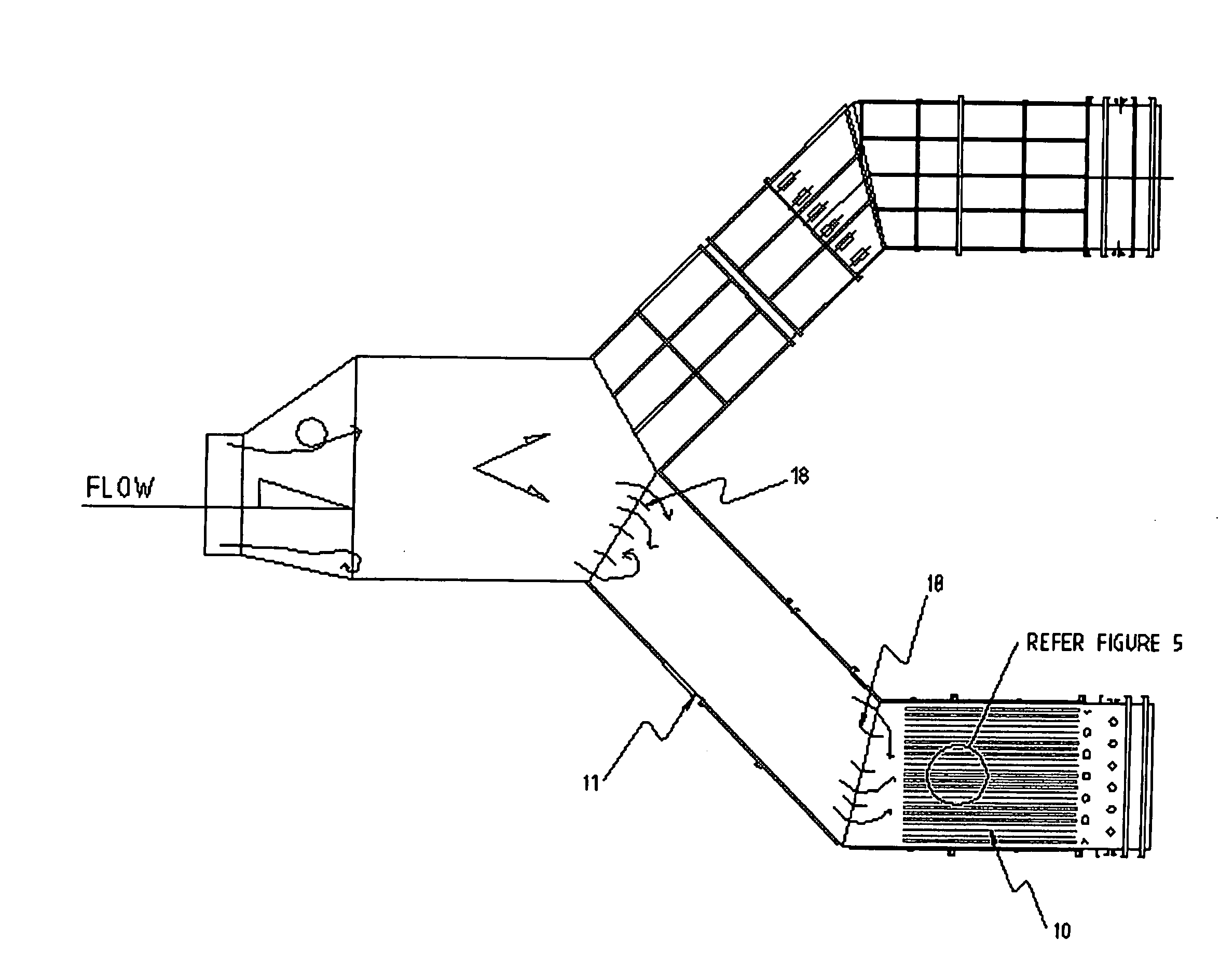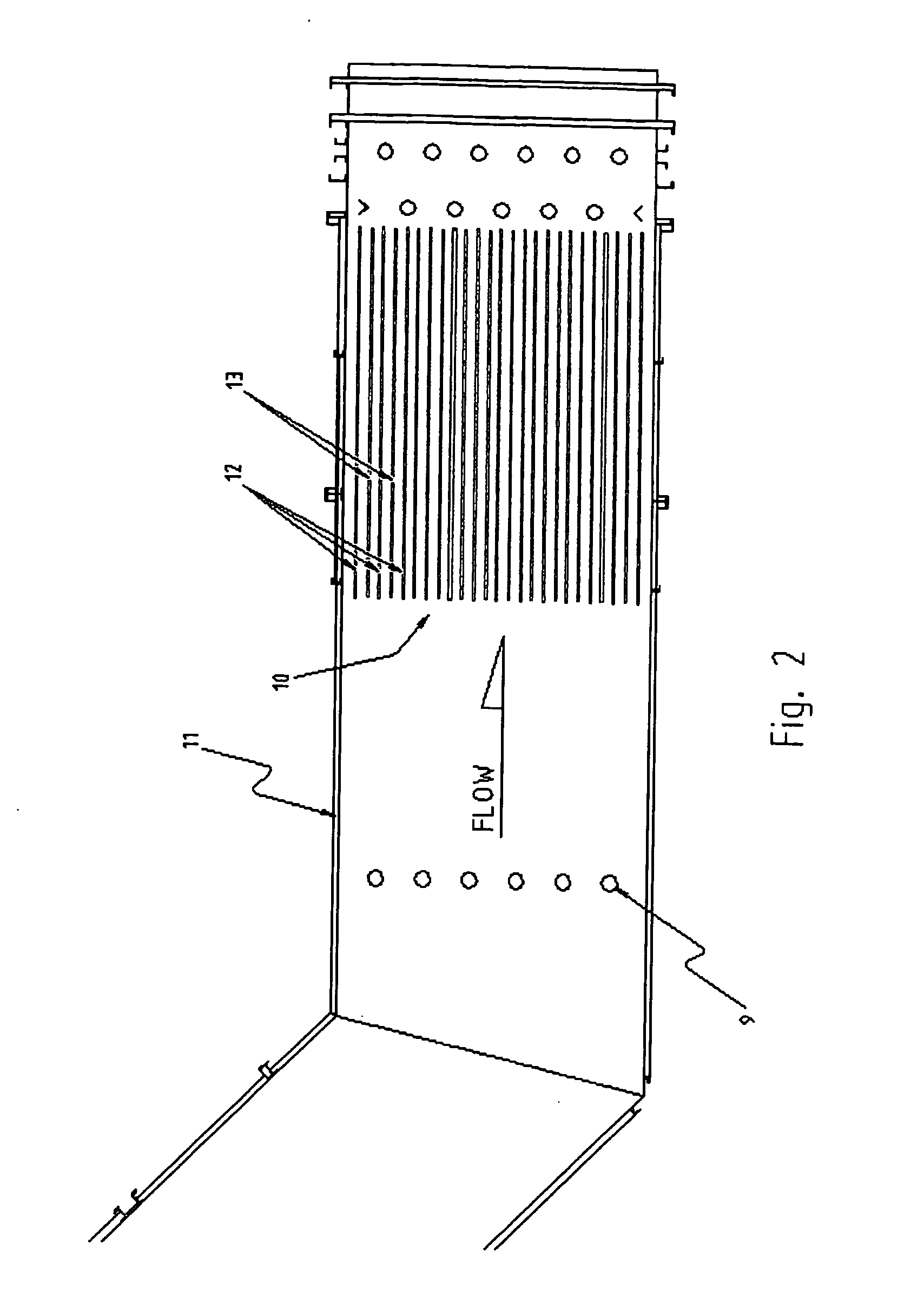Method and apparatus for mixing fluids for particle agglomeration
a technology of mixing fluid and particle agglomeration, which is applied in the directions of auxillary pretreatment, separation processes, transportation and packaging, etc., can solve the problems of emitted small hazardous particles into the atmosphere, posing a significant danger to public health, and usually much less effective in filtering out small particles. , to achieve the effect of efficient agglomeration of particles, reducing pressure loss, and improving particle mixing
- Summary
- Abstract
- Description
- Claims
- Application Information
AI Technical Summary
Benefits of technology
Problems solved by technology
Method used
Image
Examples
Embodiment Construction
[0053] FIGS. 1 to 6 illustrate an aerodynamic agglomerator according to one embodiment of this invention. The agglomerator 10 is housed in a duct 11 which typically receives a flow of exhaust gas from an industrial process, as shown in FIG. 1.
[0054] The agglomerator 10 comprises a plurality of generally planar members, such as metal plates 12, which extend longitudinally in the duct 11 (i.e. in the direction of overall gas flow), and are spaced transversely across the whole width of the duct. Passages are formed between the plates 12, and the gas flow is divided into substreams flowing through respective passages. Although the plates 12 are mounted vertically as shown in FIG. 2, they can be arranged horizontally if desired. Moreover, the plates 12 need not be solid. Perforated plates can be used if desired.
[0055] Vane assemblies 13 are mounted between the plates 12. Each vane assembly 13 is located centrally in its respective passage between two adjacent plates 12, and extends par...
PUM
| Property | Measurement | Unit |
|---|---|---|
| Flow rate | aaaaa | aaaaa |
| Size | aaaaa | aaaaa |
| Width | aaaaa | aaaaa |
Abstract
Description
Claims
Application Information
 Login to View More
Login to View More - R&D
- Intellectual Property
- Life Sciences
- Materials
- Tech Scout
- Unparalleled Data Quality
- Higher Quality Content
- 60% Fewer Hallucinations
Browse by: Latest US Patents, China's latest patents, Technical Efficacy Thesaurus, Application Domain, Technology Topic, Popular Technical Reports.
© 2025 PatSnap. All rights reserved.Legal|Privacy policy|Modern Slavery Act Transparency Statement|Sitemap|About US| Contact US: help@patsnap.com



